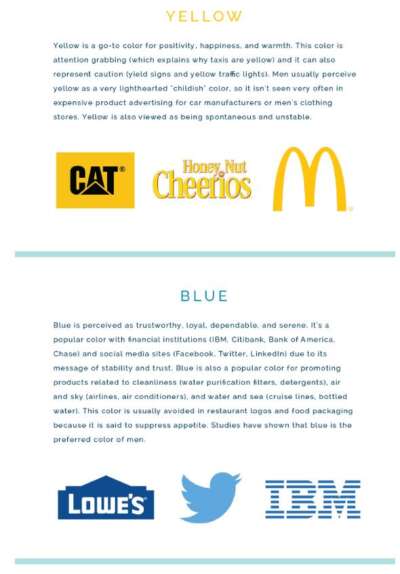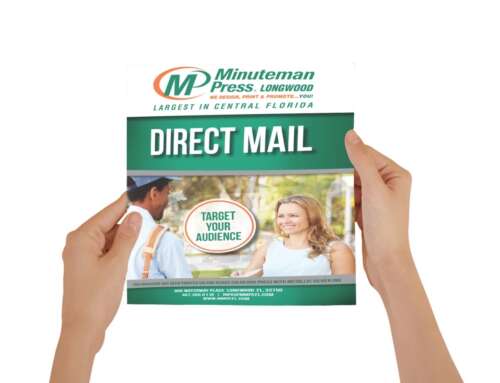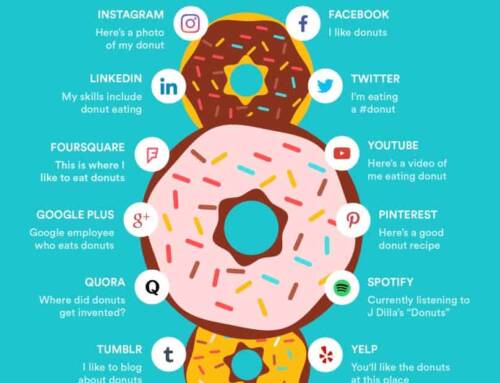6 Branding Mistakes You’re Probably Making
Your brand is your reputation. Make sure you have a good one.
You’re a small business owner. Your doors have been open for quite some time, you have a few regular clients, and your website is up and running. And yet, your phones do not seem to ring as much as you expect. You paid for a digital marketing campaign. You have a great location, skilled staff, and a great product. What could you be doing wrong? Could it be that you’ve made a few branding mistakes?
“But wait, I paid a couple hundred dollars for that logo! What’s wrong with my branding?”
To build a good brand, you need a fundamental understanding of what it takes to build a brand. Many businesses, big and small, make mistakes with their brand—some of the biggest marketing firms have made incredible blunders! But how do you fix it?
The Most Common Branding Blunders
1. Your brand is inconsistent
Maybe you invested in a great logo design, but did you spend anything on your brand voice, images, website, fonts, and brand colors? If your logo is light blue on your website and business cards, but purple on social media, you’re sending mixed messages. Someone may overlook you if they can’t recognize your logo at a glance. Inconsistent branding can lead to high bounce rates, customer confusion, and decreased confidence in your brand.
Check out this infographic from Elle and Company Design which explains some of the psychology of color in branding. The perception of your brand begins the second someone sees your logo.

You can avoid a major branding blunder by making consistent color and design choices. It helps to build trust and recognition, which is essential to marketing. Making a brand guide can really help—even just a spreadsheet or one-page document can help. Making this guide available to your employees helps ensure that your brand will have proper representation at all times.
2. Your brand is too trendy
While you don’t want to look like you only recently discovered the internet, that also doesn’t mean you need to emulate the hippest and edgiest spots in town to stake your claim. If you’re not a trendy, downtown start up, don’t brand yourself as one—know your core identity and target audience and build around that. Timeless never goes out of style. There are elements of branding that have stood the test of time, like crisp clean logos, and eye-catching color schemes. Would you hire a law firm decked out in millennial pink? Aim for somewhere between classic and classy before you venture into new and disruptive, unless of course, that’s your brand.
3. Your brand name is attached to the wrong things
Just because your company’s name or logo can be somewhere, does not mean it should be everywhere. Do you attend every single social event you are invited to? Probably not. Likewise, not every product or promotional opportunity serves the mission or perception of your business.
An example of this is when one of the world’s most well-known toothpaste companies decided that they were going to take a swing at making frozen foods. This is one case where less is more! If you expand your product line, services, or offerings, make sure the connection is crystal clear. Exceptions to this rule include gum companies, Velcro distributors, and cling wrap, where sticking to the wrong things might make for a great marketing campaign!
4. Your website copy is bad
Does your website read like the transcript of a late night infomercial? Does it sound like a high-schooler wrote your social media posts? What about your direct mail campaigns? A consistent tone in your brand voice builds credibility. Aim for a unique but accurate voice—don’t call yourself the best in Orlando if no one is saying that. But you may be the only company in your niche with a 24-7 support staff! Highlight what you do have, rather than what you want to have. Be conscious of using industry jargon by writing for the people you want to target, not for yourself.
“All content is not created equal. Some content will go viral, generating tons of hot traffic to your blog, while others will be lost in the archives. If you want more of the first kind, you’ve got to put your readers first.” —Marketing guru and entrepreneur, Neil Patel
5. Your brand is too complex
Simplicity is memorable. You don’t need the whole color spectrum in your logo. Your website shouldn’t have a novel’s worth of copy. You want something bold and quick that can stick. Shoot for clean, quick, and simple.
6. Your brand us insincere
Don’t lie, fabricate, exaggerate, or falsify information about your brand. People will find out, and they will not waste a single moment in calling you out on it. Authenticity sells better, even if it makes you look like a “small company.” That’s okay! In fact, many larger companies are making efforts to appear smaller than they are.
Your brand should be organic when possible. Reach out to influencers or even past customers to speak about your brand so you don’t have to. A great testimonial holds a lot more weight than a false claim.
If you’ve made a branding mistake or two, it is never too late to fix them. With the help of an actionable branding strategy and Minuteman Longwood, your company can position itself in a place of authority, credibility, and reliability.


6 Branding Mistakes You’re Probably Making
Your brand is your reputation. Make sure you have a good one.
You’re a small business owner. Your doors have been open for quite some time, you have a few regular clients, and your website is up and running. And yet, your phones do not seem to ring as much as you expect. You paid for a digital marketing campaign. You have a great location, skilled staff, and a great product. What could you be doing wrong? Could it be that you’ve made a few branding mistakes?
“But wait, I paid a couple hundred dollars for that logo! What’s wrong with my branding?”
To build a good brand, you need a fundamental understanding of what it takes to build a brand. Many businesses, big and small, make mistakes with their brand—some of the biggest marketing firms have made incredible blunders! But how do you fix it?
The Most Common Branding Blunders
1. Your brand is inconsistent
Maybe you invested in a great logo design, but did you spend anything on your brand voice, images, website, fonts, and brand colors? If your logo is light blue on your website and business cards, but purple on social media, you’re sending mixed messages. Someone may overlook you if they can’t recognize your logo at a glance. Inconsistent branding can lead to high bounce rates, customer confusion, and decreased confidence in your brand.
Check out this infographic from Elle and Company Design which explains some of the psychology of color in branding. The perception of your brand begins the second someone sees your logo.

You can avoid a major branding blunder by making consistent color and design choices. It helps to build trust and recognition, which is essential to marketing. Making a brand guide can really help—even just a spreadsheet or one-page document can help. Making this guide available to your employees helps ensure that your brand will have proper representation at all times.
2. Your brand is too trendy
While you don’t want to look like you only recently discovered the internet, that also doesn’t mean you need to emulate the hippest and edgiest spots in town to stake your claim. If you’re not a trendy, downtown start up, don’t brand yourself as one—know your core identity and target audience and build around that. Timeless never goes out of style. There are elements of branding that have stood the test of time, like crisp clean logos, and eye-catching color schemes. Would you hire a law firm decked out in millennial pink? Aim for somewhere between classic and classy before you venture into new and disruptive, unless of course, that’s your brand.
3. Your brand name is attached to the wrong things
Just because your company’s name or logo can be somewhere, does not mean it should be everywhere. Do you attend every single social event you are invited to? Probably not. Likewise, not every product or promotional opportunity serves the mission or perception of your business.
An example of this is when one of the world’s most well-known toothpaste companies decided that they were going to take a swing at making frozen foods. This is one case where less is more! If you expand your product line, services, or offerings, make sure the connection is crystal clear. Exceptions to this rule include gum companies, Velcro distributors, and cling wrap, where sticking to the wrong things might make for a great marketing campaign!
4. Your website copy is bad
Does your website read like the transcript of a late night infomercial? Does it sound like a high-schooler wrote your social media posts? What about your direct mail campaigns? A consistent tone in your brand voice builds credibility. Aim for a unique but accurate voice—don’t call yourself the best in Orlando if no one is saying that. But you may be the only company in your niche with a 24-7 support staff! Highlight what you do have, rather than what you want to have. Be conscious of using industry jargon by writing for the people you want to target, not for yourself.
“All content is not created equal. Some content will go viral, generating tons of hot traffic to your blog, while others will be lost in the archives. If you want more of the first kind, you’ve got to put your readers first.” —Marketing guru and entrepreneur, Neil Patel
5. Your brand is too complex
Simplicity is memorable. You don’t need the whole color spectrum in your logo. Your website shouldn’t have a novel’s worth of copy. You want something bold and quick that can stick. Shoot for clean, quick, and simple.
6. Your brand us insincere
Don’t lie, fabricate, exaggerate, or falsify information about your brand. People will find out, and they will not waste a single moment in calling you out on it. Authenticity sells better, even if it makes you look like a “small company.” That’s okay! In fact, many larger companies are making efforts to appear smaller than they are.
Your brand should be organic when possible. Reach out to influencers or even past customers to speak about your brand so you don’t have to. A great testimonial holds a lot more weight than a false claim.
If you’ve made a branding mistake or two, it is never too late to fix them. With the help of an actionable branding strategy and Minuteman Longwood, your company can position itself in a place of authority, credibility, and reliability.










